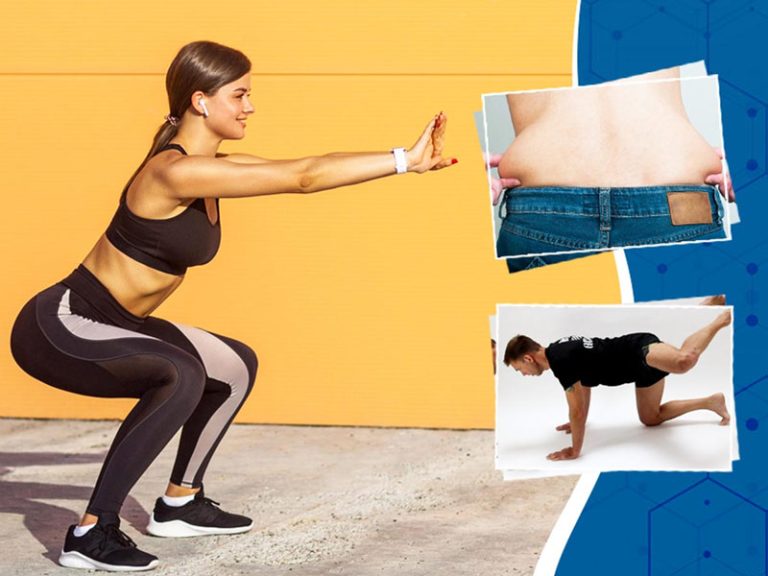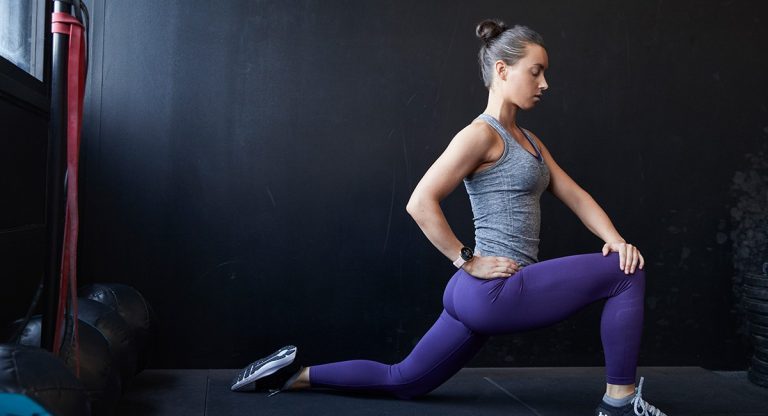Hip Flexor Exercises for Running: Improve Performance and Prevent Injury
When it comes to running, we often focus on our legs and lungs, but what about our hips? These seemingly forgotten joints play a crucial role in our running performance, leg lift, and injury prevention.
That’s why hip flexor exercises should be on every runner’s radar. Not only do these exercises strengthen our hips and glutes, but they also improve our overall running efficiency.
From the hamstring bridge to the banded air squat, there are numerous exercises that can take our running game to the next level. So, get ready to lace up your shoes and dive into a world of hip flexor exercises for running success.
But remember, warming up and focusing on proper form are key, especially if you want to steer clear of hip injuries. And if you’re looking for some extra guidance, there’s even a handy mobile app available for additional training.
Let’s hit the ground running 鈥?with strong hips leading the way!
hip flexor exercises for running
Hip flexor exercises are crucial for runners to improve leg lift and enhance running performance. Engaging in regular hip flexor exercises not only helps prevent injuries but also enhances running form.
There are three specific exercises recommended for targeting the hip flexors: hamstring bridge with banded hip flexion, front plank with banded hip flexion, and standing knee lift. These exercises strengthen the hips, build stability in the pelvis, and ultimately improve stride.
Additionally, combining hip exercises with glute activation drills can lead to better results. The bridge exercise, which comes in four variations, is considered the ultimate hip strengthening exercise for runners.
Other exercises, such as TRX hamstring curl, weighted bridge, side stepping, bridge with miniband, banded air squat, and the couch stretch, are also beneficial. It is crucial to warm up before performing these exercises and to maintain proper form throughout.
Weak hips can lead to injuries and inefficient running form, so focusing on hip and glute strengthening is essential. It is recommended to incorporate these exercises into a routine and start before experiencing a hip injury.
For additional training, information, and community support, a mobile app is available.
Key Points:
- Hip flexor exercises are important for runners to improve leg lift and enhance running performance.
- Three specific exercises recommended for targeting the hip flexors are hamstring bridge with banded hip flexion, front plank with banded hip flexion, and standing knee lift.
- These exercises strengthen the hips, build stability in the pelvis, and improve stride.
- Combining hip exercises with glute activation drills can lead to better results.
- Other beneficial exercises include TRX hamstring curl, weighted bridge, side stepping, bridge with miniband, banded air squat, and the couch stretch.
- It is crucial to warm up before performing these exercises and maintain proper form.
- A mobile app is available for additional training, information, and community support.
Sources
https://therunexperience.com/how-to-develop-strong-hips-for-running/
https://www.runnersworld.com/uk/training/cross-training/a40976751/hip-flexor-exercises/
https://sportydoctor.com/hip-flexor-exercises/
https://www.verywellfit.com/7-best-hip-flexor-exercises-5080772
Check this out:
💡 Pro Tips:
1. Incorporate dynamic stretching into your hip flexor exercises. Dynamic stretching involves moving through a range of motion instead of holding a static stretch. For example, try leg swings or walking lunges to warm up and engage your hip flexors before your workout.
2. Don’t neglect your core muscles. Strengthening your core is essential for proper hip and pelvic stability while running. Include exercises like planks, Russian twists, and bicycle crunches in your routine to target your abdominal and lower back muscles.
3. Add resistance bands to your hip flexor exercises. Resistance bands provide added resistance and help activate the muscles in your hips and glutes. Try performing hip flexion exercises, such as banded hip marches or lateral walks, with a resistance band around your thighs for an extra challenge.
4. Incorporate balance exercises into your hip flexor routine. Improving balance through exercises like single-leg squats or standing on one foot can help strengthen your hip stabilizer muscles and prevent injuries while running.
5. Don’t forget about recovery and foam rolling. After your hip flexor exercises, spend some time foam rolling the muscles in your hips and thighs to release any tension and promote better mobility. This can help prevent muscle imbalances and maintain healthy hip flexors for running.
Importance Of Hip Flexor Exercises For Runners
Hip flexor exercises play a crucial role in improving leg lift and running performance for runners of all levels. The hip flexors are a group of muscles located in the front of the hip joint, responsible for flexing the hip and lifting the leg during running.
By regularly engaging in hip flexor exercises, runners can prevent injury, enhance their running form, and ultimately improve their overall performance.
One of the main benefits of hip flexor exercises is injury prevention. Strong hip flexors help to stabilize the pelvis and hips, reducing the risk of common running injuries such as iliotibial band syndrome, runner’s knee, and hip pain.
Additionally, weak hip flexors can lead to imbalances in the body, causing compensations in other areas and potentially leading to overuse injuries.
Furthermore, hip flexor exercises can greatly enhance running form. Proper form is essential for efficiency and speed while running.
By strengthening the hip flexors, runners can achieve a greater leg lift, allowing for a more extended stride and increased propulsion. This improved range of motion in the hip joint can contribute to a more efficient and powerful running stride.
Recommended Hip Flexor Exercises For Improved Running Performance
Several specific hip flexor exercises are highly recommended for runners aiming to improve their running performance. These exercises target the hip flexor muscles directly, aiding in their strengthening and flexibility.
Some of the exercises include:
1. Hamstring Bridge with Banded Hip Flexion: Lie on your back with your feet flat on the ground and knees bent.
Place a resistance band just above your knees, and lift your hips off the ground, engaging your glutes and hamstrings. Then, while maintaining the bridge position, lift one knee toward your chest, focusing on engaging the hip flexors.
Repeat on the other side.
2. Front Plank with Banded Hip Flexion: Begin in a plank position with your forearms and toes on the ground.
Place a resistance band just above your knees. While maintaining a stable plank position, lift one knee toward your chest, focusing on engaging the hip flexors.
Repeat on the other side.
3. Standing Knee Lift: Stand with your feet hip-width apart.
Lift one knee as high as possible while maintaining a balanced stance. Lower the leg back down and repeat on the other side.
This exercise directly targets the hip flexors and improves their strength and range of motion.
The Ultimate Hip Strengthening Exercise For Runners
The bridge exercise is often considered the ultimate hip strengthening exercise for runners. It targets the entire hip complex, including the glutes, hamstrings, and hip flexors.
There are various ways to challenge the hips and progress the bridge exercise:
i. Traditional Bridge: Lie on your back with your feet flat on the ground and knees bent.
Lift your hips off the ground, engaging your glutes and hamstrings. Hold for a few seconds, then lower back down.
ii. Single-Leg Bridge: Similar to the traditional bridge, but perform the exercise with one leg extended straight in front of you.
This variation increases the intensity and challenges the hip stabilizers even further.
iii. Marching Bridge: Begin in the traditional bridge position.
While maintaining the bridge, alternate lifting one knee toward your chest, then lowering it back down, mimicking a marching motion.
iv. Banded Bridge: Place a resistance band just above your knees and perform the traditional bridge exercise.
The band adds extra resistance, targeting the hip abductors and challenging their strength.
Additional Exercises To Strengthen The Hips And Glutes
In addition to the recommended hip flexor exercises, there are several other exercises that can further strengthen the hips and glutes, improving running performance and minimizing the risk of injury. These exercises include:
Benefits Of Targeting Hip Flexors And Gluteus Medius For Running Form
Targeting the hip flexors and gluteus medius is vital for improving running form and overall performance. The hip flexors assist in lifting the leg during the swing phase of running, aiding in a more extended stride and efficient movement.
Strong and flexible hip flexors contribute to a more powerful running stride.
The gluteus medius, on the other hand, plays a crucial role in stabilizing the hips and pelvis during running. If this muscle is weak, it can cause biomechanical imbalances, such as excessive hip drop or inward rotation, which can lead to inefficient running form and increased fatigue.
Strengthening the gluteus medius helps to maintain proper alignment and share the workload with other muscles in the kinetic chain.
Incorporating Hip Flexor Exercises Into Your Routine
To effectively incorporate hip flexor exercises into your routine, it is important to warm up before and focus on proper form during the exercises. Begin with a dynamic warm-up that includes dynamic stretches and movements to increase blood flow and activate the muscles.
Select a set of hip flexor exercises that target both the hip flexors and glutes for a well-rounded workout. Start with two to three sets of each exercise, gradually increasing the repetitions as your strength improves.
Aim to perform these exercises two to three times per week, alongside your regular running routine.
Remember to always prioritize your form and engage the appropriate muscles during each exercise. If you experience any pain or discomfort while performing hip flexor exercises, consult with a healthcare professional or a qualified trainer to ensure proper technique or modify the exercises as needed.
In conclusion, hip flexor exercises are indispensable for runners aiming to improve their running performance and prevent injury. By regularly incorporating these exercises, runners can strengthen their hip flexors, glutes, and other muscles in the lower body, resulting in enhanced running form, increased leg lift, and improved overall performance.
Remember to focus on form, listen to your body, and gradually progress the intensity of the exercises to achieve optimal results.







